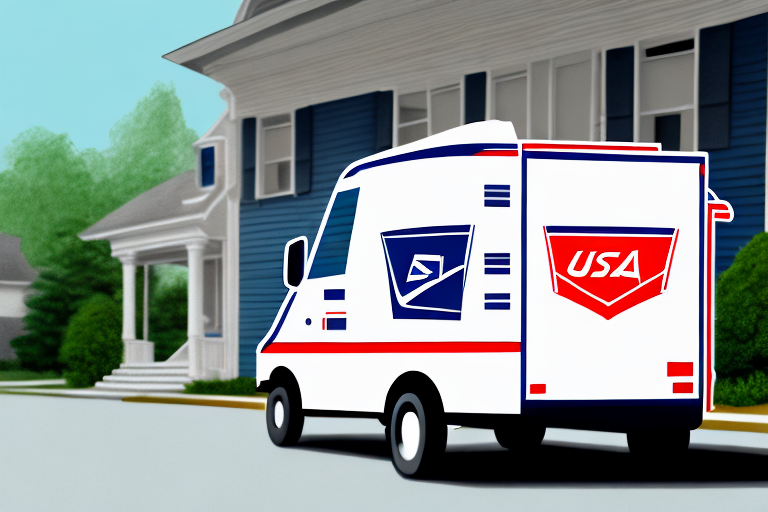Understanding USPS Proof of Delivery
When shipping packages through the United States Postal Service (USPS), ensuring that your shipment reaches its destination safely and on time is paramount. Despite USPS's reputation for reliable service, packages can sometimes go missing, get damaged, or be delivered to the wrong address. Therefore, having Proof of Delivery (POD) is crucial for both businesses and individuals. POD serves as evidence that a package was delivered as intended, providing peace of mind and legal protection.
The Importance and Benefits of Proof of Delivery
Proof of Delivery plays a vital role in the shipping process for several reasons:
- Verification: Confirms that the recipient received the package.
- Dispute Resolution: Helps resolve any disagreements regarding delivery status.
- Legal Protection: Acts as legally-binding evidence in case of disputes or claims.
- Operational Insights: Provides data on delivery times and helps improve logistics.
According to the 2023 USPS Service Performance Report, having a POD can reduce delivery disputes by up to 30%, highlighting its significance in maintaining trust and efficiency in the shipping process.
Types of USPS Proof of Delivery Options
USPS offers several Proof of Delivery options to cater to different shipping needs:
- Priority Mail Express: Includes free POD service, offering overnight delivery with tracking.
- Certified Mail: Provides a receipt as proof of mailing and an electronic verification of delivery, often requiring an additional fee.
- Registered Mail: Offers added security and detailed tracking, suitable for valuable or important items.
- Signature Confirmation: Requires the recipient’s signature upon delivery, ensuring the package reaches the intended person.
Each option varies in terms of cost and level of security, so it's essential to choose the one that best fits your specific needs. For more detailed information, visit the USPS official website.
How to Generate and Create a USPS Proof of Delivery
Generating a USPS Proof of Delivery Online
Creating a USPS Proof of Delivery online is straightforward. Follow these steps:
- Visit the USPS website.
- Navigate to the Tracking section.
- Enter your tracking number in the designated field.
- Select the appropriate POD option available for your service type.
Note that not all USPS services include POD by default. Services like Priority Mail Express and Certified Mail allow for online POD generation, whereas First-Class Mail does not.
Step-by-Step Guide to Creating a USPS Proof of Delivery
Follow this detailed guide to ensure you correctly create a USPS Proof of Delivery:
- Select a Qualifying Service: Choose USPS services such as Priority Mail Express, Registered Mail, or Certified Mail that support POD.
- Obtain Tracking Information: Use the tracking number provided to monitor your shipment's progress.
- Generate POD: Access the USPS website or use their mobile app to download or print the POD document once the package is delivered.
For international shipments, consider using USPS's Global Express Guaranteed or Priority Mail International services, which offer tracking and delivery confirmation options.
Best Practices for Accurate Proof of Delivery Documentation
To ensure your POD documentation is reliable and effective, adhere to the following best practices:
- Verify Delivery Address: Double-check the recipient's address before shipping to prevent misdelivery.
- Include Delivery Timestamp: Ensure the POD includes the exact date and time of delivery.
- Secure Storage: Store POD documents in a safe and easily accessible location for future reference.
- Use Secure Services: Opt for services that offer additional security features, such as signature confirmation.
Common Mistakes to Avoid When Creating a USPS Proof of Delivery
Avoiding common pitfalls can enhance the effectiveness of your POD:
- Omitting Delivery Details: Always include the date and time of delivery to ensure the POD is complete.
- Poor Documentation Storage: Failing to store PODs properly can lead to difficulties in resolving disputes.
- Choosing Inappropriate Services: Selecting a USPS service that doesn't support POD can leave you without necessary proof.
By being mindful of these mistakes, you can ensure that your Proof of Delivery remains a valuable tool in your shipping process.
Tracking Your Package with USPS
Tracking your USPS package is essential for staying informed about its delivery status. Here's how to effectively track your shipment:
- Visit the USPS website.
- Go to the Tracking section.
- Enter your tracking number and click Track.
- Review the tracking updates and delivery information provided.
Keep in mind that tracking information may not always be real-time due to factors like weather conditions or technical issues. For the most accurate updates, consider signing up for USPS tracking alerts via email or SMS.
Benefits and Limitations of USPS Proof of Delivery
While USPS Proof of Delivery offers significant advantages, it also comes with certain limitations:
Benefits
- Confidence in Delivery: Provides assurance that your package has been delivered to the correct address.
- Dispute Resolution: Facilitates the resolution of delivery disputes with clear evidence.
- Operational Efficiency: Helps businesses track delivery performance and improve logistics.
Limitations
- Lack of Recipient Verification: POD confirms delivery to the address but not necessarily to the intended recipient.
- Service Restrictions: Not all USPS services include POD, potentially requiring additional costs for enhanced services.
- No Real-Time Tracking: Unlike GPS-based tracking, USPS POD does not provide real-time location data.
Considering these factors, it's essential to choose the appropriate USPS service that aligns with your delivery and proof requirements.
Conclusion
Obtaining a USPS Proof of Delivery is essential for ensuring that your packages are delivered as intended and for providing legally-binding evidence in case of any disputes. By selecting the right USPS service, following best practices for POD documentation, and avoiding common mistakes, you can enhance the reliability and security of your shipping process.
Remember, while Proof of Delivery verifies delivery, it does not replace the need for insurance. For valuable or fragile items, consider purchasing insurance to protect against loss or damage during transit.
For more information on USPS services and Proof of Delivery options, visit the official USPS website.






















